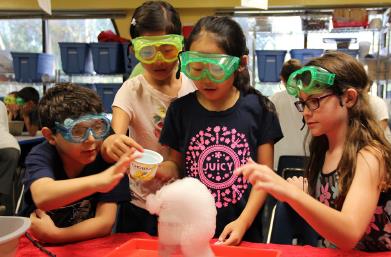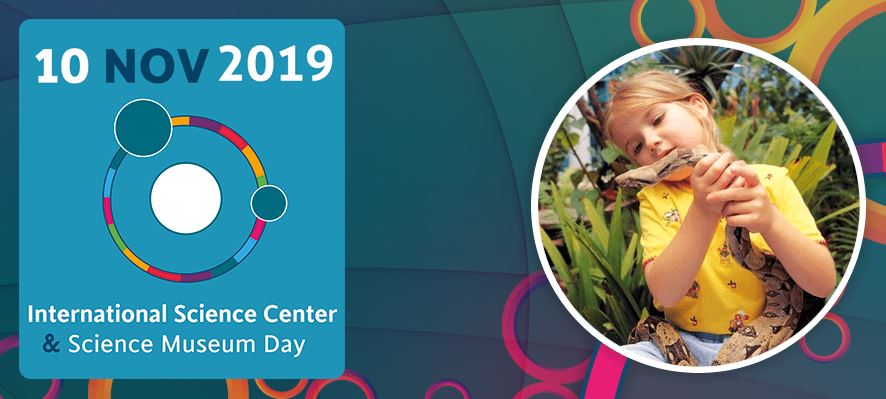History :
The Exploratorium is a museum of science, technology and arts in San Francisco.
The Exploratorium was founded by the physicist and educator Frank Oppenheimer and opened in 1969 at the Palace of Fine Arts its home until January 2, 2013. On April 17, 2013, the Exploratorium reopened at Piers 15 and 17 on San Francisco bay. The historic interior and exterior of Pier 15 was renovated extensively prior to the move, and is divided into several galleries mainly separated by content, including the physics of seeing and listening (Light and Sound), Human Behavior, Living Systems, Tinkering (including electricity and magnetism), the Outdoor Gallery, and the Bay Observatory Gallery, which focuses on local environment, weather, and landscape.

Since the museum’s founding, over 1,000 participatory exhibits have been created, approximately 600 of which are on the floor at any given time. The exhibit-building workshop space is contained within the museum and is open to view. In addition to the public exhibition space, the Exploratorium has been engaged in the professional development of teachers, science education reform, and the promotion of museums as informal education centers since its founding. Since Oppenheimer’s death in 1985, the Exploratorium has expanded into other domains, including its 50,000-page website and iPad app. It has also inspired an international network of participatory museums working to engage the public with general science education. The new Exploratorium building is also working to showcase environmental sustainability efforts as part of its goal to become the largest net-zero museum in the country. He has a major solar pannel to furnish its energy [1].

Field trip with explainers :
Dr Oppenheimer, the founder of the exploratorium had a special conviction about learning science. For him, having a real experience out of school was really important to learn. But he also knowed how it could be frustrated for someone not trained to understand it. That’s why he created this explainer program. Since 20 years, the explainers, special employees help the visitors to go through the museum. They are group of educators which help the visitor during the arrival : they guides the group to the check-in entry and help the teacher when they have classes. They will then guide the visitors through the museum and can help them when they have questions. There’s also some parts of the exhibitions where visitors can go through freely; but in case of need they always can find explainers at some special points inside the museum [2].

Plan and journey of the visitor :

Exhibits in the Exploratorium cover a range of subjects areas including human perception (vision, hearing, learning, cognition), the life sciences, physical phenomena (light, motion, electricity, waves, resonance, magnetism), local environment (water, wind, fig, rain, sun..) and the human bevior (cooperation, competition, sharing) [3].

Exploring a few examples of interaction of the exploratorium
Human perception : the Black Box Space of the exploratorium
A place for presenting artwork that inspires and astounds in mysterious and wondrous ways, the Black Box is a darkened 800-square-foot space that provides an ideal environment for media art installations. A commonly used metaphor in science and engineering, a black box describes something that has observable inputs and outputs and unseen inner workings. Something goes in and something comes out, but the process by which transformation occurs is “black” or unknown to the observer.
Drawing on the Exploratorium’s unique province as a hybrid museum presenting and developing artworks at the juncture of art, science, and technology, the Black Box features dynamic, innovative multimedia exhibitions to prompt curiosity and transformation.

Living systems : See the plankton populations that multiply or die in response to changing ocean conditions
This interactive display presents microscopic marine organisms called phytoplankton. Visitors use special lenses to see what the plankton look like and to find out which live in different parts of the ocean at various times of year.

“We adapted a scientific model created at MIT” says Associate Curator Jennifer Frazier. ”Because the exhibit is based on real data, if you were able to look in the ocean with a microscope, this is what you’d be likely to see. I’m excited about this exhibit because it continues the Exploratorium’s tradition of engaging people with amazing phenomena of the natural world—but with new scientific data, visitors can explore worlds at a scale they normally can’t see.”
Human behavior : cooperation through the survival game
Players struggle to keep their livestock herds alive and thriving—despite disease, drought, and other dangers. When your neighbor suffers a major loss, the question arises: Can you afford to share? But the real question may be, can you afford not to?

Tinkering

The Tinkering Studio is the heart of this gallery. In this immersive space, visitors use tools and materials to explore the intersection of science, art, and technology. They try experiments for the first time, or play along with other makers and artists. Whether expert of novice, they’re all learning together by making something that is personally meaningful.
Adjacent to the gallery is the museum’s exhibit-building workshop, where most of the exhibits are made. Open to public view, you’ll see our staff working with a variety of materials—woodworking tools, drills, and lathes, for example—and some of our exhibits in various stages of development [7].

After dark Tuedays : the museum is not only for kids !
Experience life After Dark, an evening series exclusively for adults that mixes cocktails, conversation, and playful, innovative science and art events.

Not a theater, cabaret, or gallery, After Dark contains aspects of all three. Each evening showcases a different topic—from music to sex to electricity—but all include a cash bar and an opportunity to play with our hundreds of hands-on exhibits.
This exhibition remains activ by distance during corona times with explainations about a different topic every thursday night on the american hour at 7 pm[8].

https://www.exploratorium.edu/video/electrified-plants?autoplay=true
And what about outside the museum ?
The exploratorium science snacks activities :
These Science Snack videos from the Teacher Institute should do just that, offering hands-on science activities you can do at home or in the classroom using easily-accessible materials [9].

https://www.exploratorium.edu/snacks
https://www.exploratorium.edu/video
The exploratorium application :

In this first application showed in live stream the solar eclipse that happened the 2 of July 2019.

Conclusion and opening about the exploratorium :
By analysing the different means of communication and interaction, I think I have found what makes the exploratorium a magical and particularly attractive place. Firstly, the interactions play on the multi-sensory appeal of touch, vision and sound. Visitors are fully active and can visualise scientific concepts in a simple way by manipulating objects. I have the impression that this museum makes particular use of the kinesthetic sense, and is very much focused on these hands on approaches. What I also find very impressive is the ability that this museum developped on all fronts: both in physics in the exhibitions with the galleries, but also with all the virtual content that can be found with the tickering, science snacks, applications and thursday evenings. I would really like to have the opportunity to visit this museum to learn more about these experiences.
With all that we have seen so far about science centres, I wonder what are the most effective ways to learn science and whether in the long run science centres will not revolutionise the way science is taught in schools.
Sources :
[1] https://en.wikipedia.org/wiki/Exploratorium
[2] https://www.youtube.com/watch?v=789BkLDm_2o
[3] https://www.exploratorium.edu/
[4] https://www.exploratorium.edu/visit/calendar/kaleidoscope
[5] https://www.exploratorium.edu/visit/gallery-4
[6] https://www.exploratorium.edu/visit/gallery-4
[7] https://www.exploratorium.edu/tinkering
[8]https://www.exploratorium.edu/visit/calendar/after-dark
[9] https://www.exploratorium.edu/snacks
[10] https://www.exploratorium.edu/explore/apps










